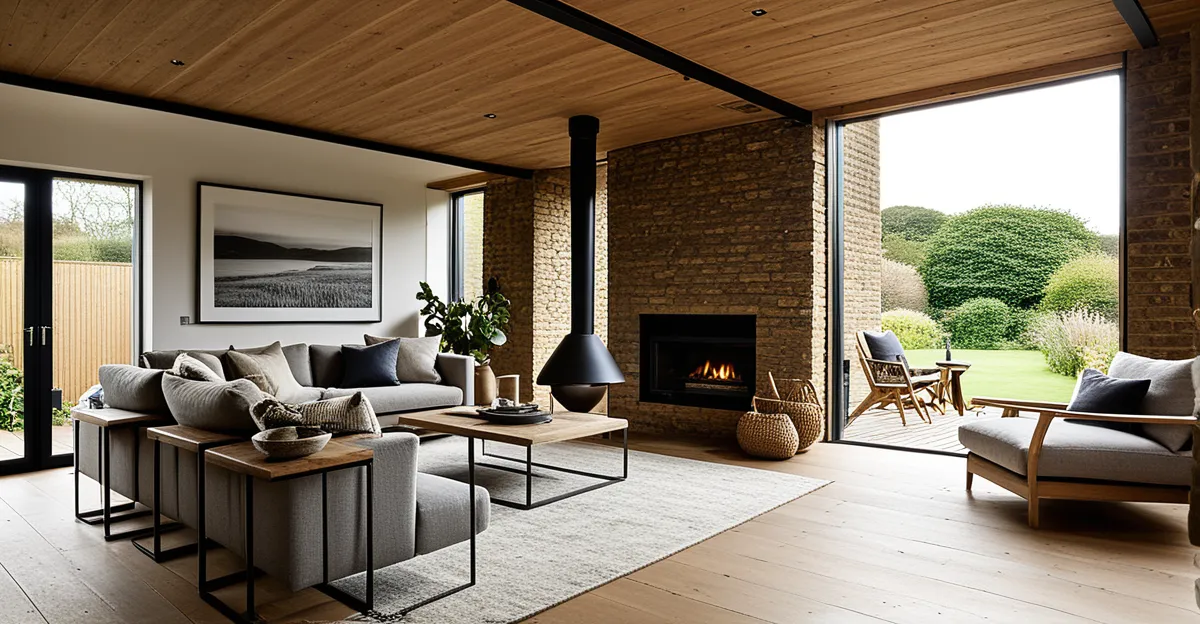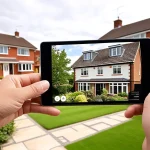Transforming Your Living Space with Eco-Friendly Decor in the UK: A Comprehensive Guide
Why Go Eco-Friendly?
In today’s world, where environmental consciousness is at the forefront of many people’s minds, transforming your living space into an eco-friendly haven is not only a responsible choice but also a stylish and sustainable one. Here’s why you should consider making the switch:
Environmental Impact
Eco-friendly decor is all about reducing your environmental footprint. By choosing sustainable materials, energy-efficient products, and natural decor items, you can significantly lower the carbon emissions associated with your home. For instance, opting for furniture made from reclaimed wood or sustainably sourced materials can help preserve forests and reduce deforestation.
Also to discover : How Can You Transform Your Home into an Eco-friendly Haven?
Health Benefits
An eco-friendly home is not just good for the planet; it’s also beneficial for your health. Natural materials and energy-efficient systems can improve air quality, reduce the presence of harmful chemicals, and create a healthier living environment. As Dr. Maria Rodriguez, an environmental health expert, notes, “Homes with eco-friendly decor tend to have better air quality, which can lead to fewer respiratory issues and overall better well-being.”
Aesthetic Appeal
Eco-friendly decor is no longer about sacrificing style for sustainability. Modern eco-friendly design offers a wide range of stylish and innovative options that can enhance the aesthetic of your home. From sleek, energy-efficient lighting to beautifully crafted sustainable furniture, you can create a space that is both eco-conscious and visually appealing.
Also to read : How Can You Transform Your Living Space with Minimal Effort?
Choosing Sustainable Materials
When it comes to transforming your living space, the materials you choose are crucial. Here are some sustainable materials and products you can consider:
Natural Materials
- Reclaimed Wood: Perfect for furniture, flooring, and even wall decor, reclaimed wood adds a touch of history and character to your home.
- Bamboo: Known for its durability and sustainability, bamboo is an excellent choice for flooring, furniture, and decorative items.
- Cork: A natural, renewable resource, cork is great for flooring and wall coverings.
- Recycled Glass: Use recycled glass for countertops, tiles, or even decorative accents.
Sustainable Furniture
- Second-Hand Furniture: Shopping at thrift stores or online marketplaces for second-hand furniture reduces waste and supports sustainable living.
- Sustainably Sourced Furniture: Look for furniture made from certified sustainable wood sources like FSC (Forest Stewardship Council) certified wood.
- Eco-Friendly Upholstery: Choose furniture with eco-friendly upholstery materials such as organic cotton or recycled polyester.
Energy-Efficient Products
- LED Lighting: LED lights are energy-efficient and last longer than traditional bulbs.
- Smart Home Devices: Devices like smart thermostats and energy monitors help you manage your energy consumption more effectively.
- Solar Panels: If feasible, consider installing solar panels to generate renewable energy for your home.
Designing Your Eco-Friendly Home
Designing an eco-friendly home involves more than just choosing the right materials; it’s about creating a space that is both sustainable and beautiful.
Interior Design Tips
- Minimalism: Adopt a minimalist approach to reduce clutter and the need for excessive decor.
- Natural Light: Maximize natural light by using sheer curtains and placing furniture strategically.
- Color Scheme: Choose a color scheme that complements natural materials and promotes a calming, eco-friendly ambiance.
Room-by-Room Guide
Here’s a detailed look at how you can transform each room in your home:
Living Room
- Sustainable Furniture: Opt for a sofa made from eco-friendly materials like recycled polyester or organic cotton.
- Energy-Efficient Lighting: Use LED bulbs or smart lighting systems.
- Natural Decor: Add plants or use natural elements like woven baskets and reclaimed wood decor.
Kitchen
- Eco-Friendly Appliances: Choose energy-efficient appliances with high energy ratings.
- Sustainable Countertops: Use recycled glass or bamboo countertops.
- Composting: Set up a composting bin to reduce food waste.
Bedroom
- Natural Bedding: Use bedding made from organic cotton or bamboo.
- Energy-Efficient Heating: Install a smart thermostat to manage your heating efficiently.
- Calming Colors: Choose a soothing color scheme that promotes relaxation.
Practical Tips for an Eco-Friendly Home
Here are some practical tips to help you create and maintain an eco-friendly home:
DIY Projects
- Upcycle Old Furniture: Give old furniture a new life by repainting or reupholstering it.
- Make Your Own Decor: Create your own decor items using natural materials like pinecones, leaves, or branches.
- Compost at Home: Start a compost bin to turn food waste into nutrient-rich soil for your garden.
Maintenance and Care
- Regular Cleaning: Use eco-friendly cleaning products to maintain your home without harming the environment.
- Energy Audits: Conduct regular energy audits to identify areas where you can improve energy efficiency.
- Gardening: Plant a garden or even a small herb garden to bring in more natural elements and improve air quality.
Financial Considerations and Incentives
Transforming your home into an eco-friendly space can have financial benefits as well.
Cost Savings
- Energy Efficiency: Energy-efficient appliances and systems can significantly reduce your energy bills over time.
- Long-Term Durability: Sustainable materials and products often have a longer lifespan, reducing the need for frequent replacements.
Government Incentives
In the UK, there are several government incentives to encourage homeowners to adopt eco-friendly practices:
| Incentive | Description |
|---|---|
| Green Homes Grant | Provides vouchers for homeowners to fund energy-efficient home improvements. |
| Renewable Heat Incentive | Offers financial support for households that install renewable heat systems. |
| Smart Export Guarantee | Pays households for excess energy generated by solar panels or other renewable sources. |
Overcoming Common Challenges
While transforming your home into an eco-friendly space is rewarding, there are some common challenges you might face.
Planning Permission
For significant changes, such as installing solar panels or making structural changes, you may need planning permission. Here are some tips to navigate this process:
- Research Local Regulations: Understand the local planning laws and regulations.
- Consult with Professionals: Talk to architects or planning consultants who can guide you through the process.
- Community Engagement: Engage with your community to ensure that your plans align with local standards and preferences.
Budget Constraints
Eco-friendly products and materials can sometimes be more expensive. Here’s how you can manage your budget:
- Start Small: Begin with small changes and gradually move towards bigger projects.
- Shop Smart: Look for discounts, sales, and second-hand options.
- DIY Projects: Engage in DIY projects that can save you money and add a personal touch.
Transforming your living space into an eco-friendly home is a journey that combines sustainability, style, and practicality. By choosing sustainable materials, designing with natural elements in mind, and adopting energy-efficient practices, you can create a home that is not only beautiful but also environmentally conscious.
As Jane Smith, an eco-friendly home designer, puts it, “Creating an eco-friendly home is about making conscious choices that benefit both you and the planet. It’s a small step towards a bigger change, and every little bit counts.”
Additional Resources
For those looking to dive deeper into eco-friendly home decor, here are some additional resources:
- Books:
- “The Eco-Friendly Home” by Josh Dorfman
- “Sustainable Home” by Natalie Walton
- Websites:
- The Spruce: Eco-Friendly Home Decor
- Treehugger: Sustainable Living
- Communities:
- Join local eco-friendly living groups or online forums to connect with others who share your interests.
By reading, learning, and implementing these tips, you can transform your living space into a sustainable, eco-friendly home that you can be proud of.







